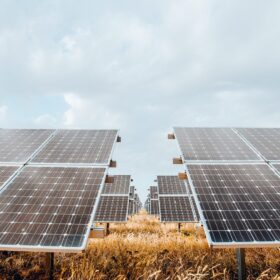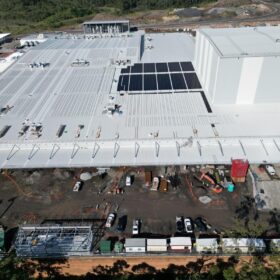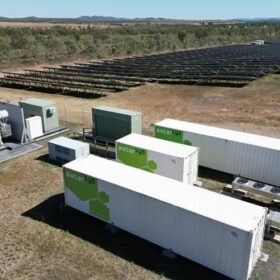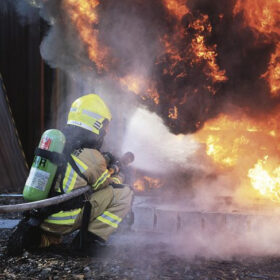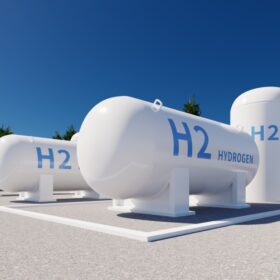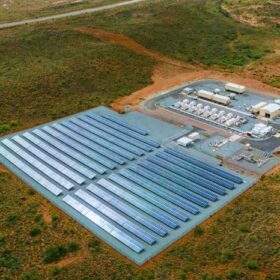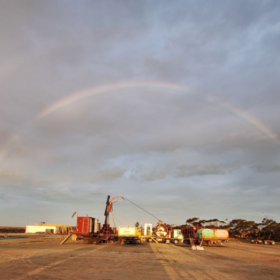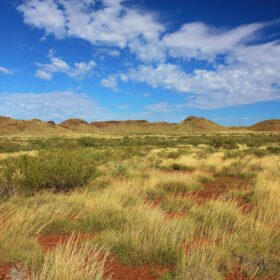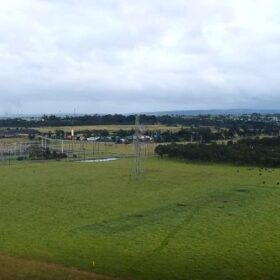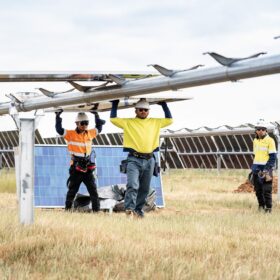Sydney property giant signs first-ever matched energy supply agreement
Clean energy technology company Enosi Energy has entered into a first of its kind initiative with real estate investment business EG Funds using a matched energy supply agreement to bulk up renewable energy used by Sydney commercial properties.
UK developer seeks go-ahead for upsized Queensland solar and storage project
United Kingdom-based solar and energy storage developer Elements Green is seeking to develop one of Australia’s largest renewables projects with its application for a 696 MW solar farm and 1,332 MWh battery energy storage system lodged with the federal government for assessment.
Drinks manufacturer to harness solar power at Queensland facility
International beverage company Suntory Oceania has started work on a 3.2 MW rooftop solar install that will help power its new $400 million manufacturing and distribution facility in Queensland.
Australia’s first large-scale solar and storage plant up for sale
Australia’s first large-scale solar and big battery storage installation – the Lakeland project in far north Queensland – has been placed on the sales block with MPower announcing it will use the proceeds to further expand its portfolio of PV and battery storage projects.
CEFC urged to pick up pace with household energy upgrades fund
The federal government has been urged to pick up the pace after the Clean Energy Finance Corporation opened the purse strings on a $1 billion fund that is to support cheaper finance for rooftop solar, home batteries and other energy efficiency upgrades for Australian homes.
Community battery rollout picks up pace adding 980 kWh capacity in NSW
The deployment of community batteries rolls on in New South Wales with network operators Endeavour Energy and Ausgrid both launching new energy storage systems on their networks.
Weekend read: Enhancing safety in lithium-ion batteries
Lithium-ion batteries are generally safe and unlikely to fail but they can catch fire if they are damaged or stored or operated incorrectly. There is a tremendous amount of research and engineering effort going into making batteries safer but are technological advancements being rolled out quickly enough?
Zen Energy links with Japanese subsidiary on green hydrogen path
Australian renewable energy gen-tailer Zen Energy has teamed with DGA Energy Solutions Australia, a subsidiary of Japanese trading giant Mitsubishi Corp, to co-develop green hydrogen projects and advance Mitsubishi’s decarbonisation goals.
Horizon on hunt for renewable solutions for Kimberley communities
Western Australian regional energy provider Horizon Power has begun the search for electricity supply solutions that maximise renewable energy sources like solar to power five remote communities in the Kimberley region, reducing their reliance on fossil-fuel generation including diesel and gas.
Gold Hydrogen hits purity high in South Australia testing
Natural hydrogen explorer Gold Hydrogen says it has uncovered 95.8% pure hydrogen at its Ramsay Project on South Australia’s Yorke Peninsula as it seeks to tap into the growing demand for the gas as a clean energy source.

